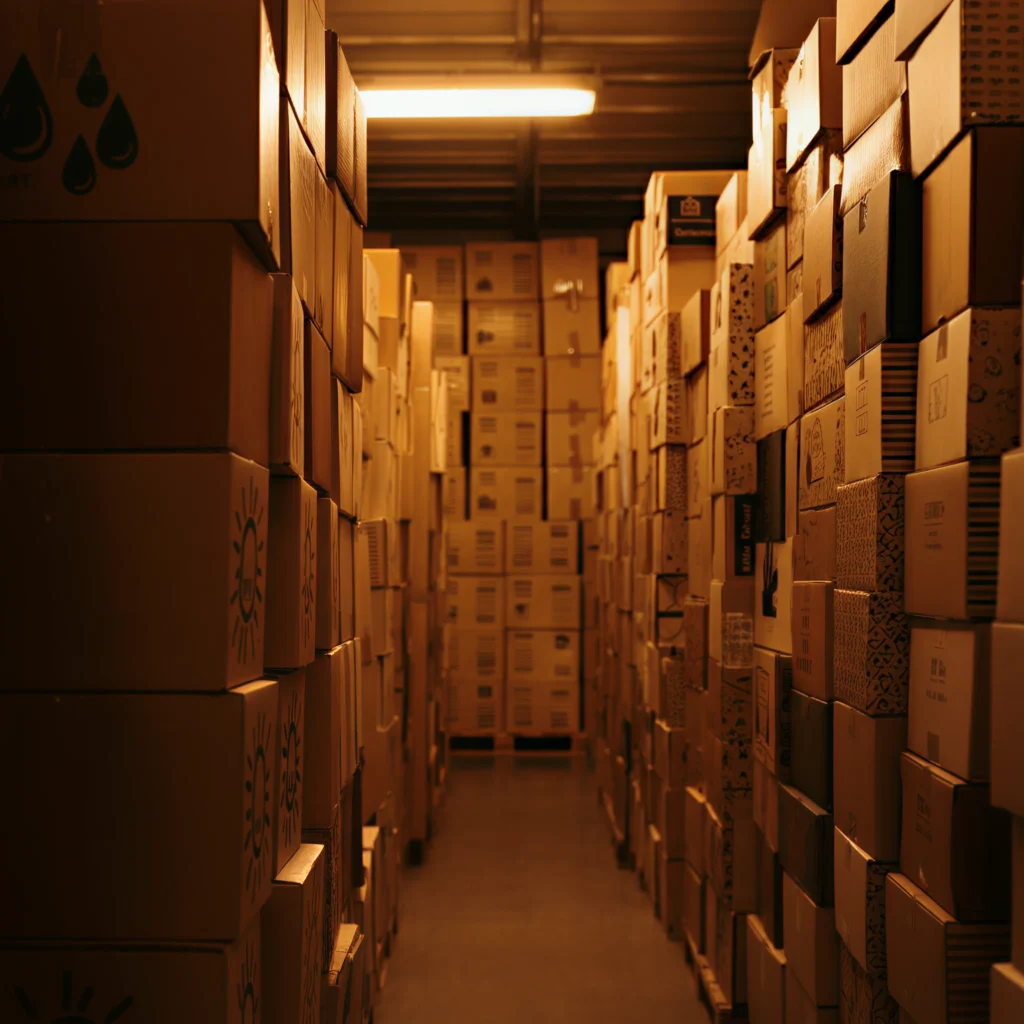Custom printed boxes have emerged as a game-changer for businesses that prioritize both effective branding and reliable packaging. Not only do these boxes serve as a canvas for visually showcasing your brand, but their durability is essential for protecting products during shipping. After all, the last thing you want is for your goods to arrive damaged, leaving customers dissatisfied.

But exactly how durable are custom printed boxes when it comes to handling the rigors of shipping? And what factors contribute to their strength? This blog will walk you through the materials, durability factors, testing methods, enhancement options, and examples of businesses perfectly balancing branding with packaging durability.
What Materials Are Used in Custom Printed Boxes?
The durability of custom printed boxes heavily depends on the materials used in their construction. Here are a few commonly used materials and their attributes:
1. Corrugated Cardboard
Corrugated cardboard is the go-to material for most shipping boxes. Composed of three layers (outer liners and a fluted middle layer), it maximizes strength while keeping the box lightweight. Corrugated cardboard is known for its ability to absorb shocks and resist compression, making it ideal for shipping heavy or fragile products.
Key Characteristics:
- High durability and impact resistance
- Available in single-wall, double-wall, and triple-wall variations for added strength
- Cost-effective and recyclable
2. Paperboard
Paperboard is a solid and lightweight material often used for smaller boxes or product packaging within outer shipping boxes. While it’s not as strong as corrugated cardboard, it can be durable enough for shipping lighter items.
Key Characteristics:
- Sleek appearance, perfect for retail-ready boxes
- Generally used in combination with corrugated outer boxes
3. Rigid Boxes
Typically used for luxury or high-end products, rigid boxes are made from thick, condensed boards that are wrapped in decorative paper. While they offer superior protection and an elegant finish, they’re best for smaller or mid-sized items rather than bulk shipping.
Key Characteristics:
- Highly durable and crush-resistant
- Can elevate branding but may be more costly
4. Kraft Boxes
Kraft boxes are made from eco-friendly kraft paper, which is both durable and biodegradable. Their rugged texture gives them a raw and organic appeal, often favored by businesses with sustainable values.
Key Characteristics:
- Moderate to high durability
- Excellent option for eco-conscious brands
Factors That Affect the Durability of Custom Printed Boxes
While materials lay the foundation, several environmental and logistical factors can impact the durability of your shipping boxes:
1. Humidity and Moisture
Excess moisture can weaken cardboard, causing it to lose structural integrity. For businesses shipping products long distances through humid climates, water-resistant coatings may be essential.
2. Temperature
Extreme temperatures, such as heat or cold, can also affect packaging. For instance, high temperatures may weaken adhesives, while freezing conditions could make the material brittle.
3. Handling During Transit
Rough handling is quite common during shipping and delivery. Boxes may be tossed, stacked improperly, or exposed to sudden impacts. Durable options like reinforced edges or double-wall corrugated cardboard can provide added protection.
4. Weight Distribution
Placing heavy products in boxes without evenly distributing the weight increases the risk of structural collapse. Designing boxes with reinforced corners or sturdy inner partitions can address this issue.
5. Shipping Method
The mode of shipping (air, truck, or sea) plays a significant role, as each comes with unique challenges. For example, sea shipping often involves stacking boxes for long periods, while air shipping requires boxes durable enough to handle sudden shifts in pressure.
Testing Standards for Durable Shipping Boxes
How do you know if a custom printed box can handle the wear and tear of shipping? That’s where testing standards come into play. These tests ensure your boxes meet durability benchmarks.
1. ECT (Edge Crush Test)
The ECT measures the stacking strength of a box by testing how much pressure its edge can withstand before it collapses. A higher ECT rating indicates a box’s ability to endure heavy stacking during storage or transport.
2. Mullen Test
The Mullen Test evaluates a box’s burst strength, measuring the pressure required to rupture the material. This is particularly crucial for protecting contents against mishandling.
3. Drop Test
This test simulates real-world shipping conditions, where boxes may be dropped from varying heights. It assesses whether a package can endure impacts without damaging its contents.
4. Vibration Test
Vibration testing is conducted to replicate the shaking and rattling that occurs during transportation. This ensures the box can withstand constant motion.
Enhancing the Durability of Custom Shipping Boxes
If you’re worried about standard boxes not cutting it for your shipping needs, you can enhance their durability in several ways:
1. Add Reinforced Corners
Extra layers of material at corners help absorb impact during drops or stacking.
2. Use Multiple Walls
Opt for double-wall or triple-wall corrugated cardboard to elevate your box’s durability.
3. Water-Resistant Coatings
Protect your boxes from humidity and sudden rain exposure by using water-resistant coatings or laminations.
4. Custom Inserts
Adding inserts and partitions allows heavy items to stay secure without exerting excessive pressure on the box itself.
5. Treated Materials
Consider chemical treatments on materials to make them weather-resistant and less prone to wear.
Real-World Examples of Durable Custom Printed Boxes
Several eCommerce and retail businesses successfully use custom printed shipping boxes that perfectly balance durability and branding:
Example 1: The Sustainable Fashion Brand
A sustainable fashion brand used kraft corrugated boxes with water-based ink for printing. Each box had reinforced corners and water-resistant coatings, ensuring their lightweight garments arrived pristine even during international shipping.
Example 2: The Gadget Retailer
An electronics retailer opted for rigid boxes with custom inserts, preventing expensive gadgets from jostling during transit. Their box’s sleek design and branding added to the unboxing experience.
Example 3: The Subscription Coffee Service
A subscription coffee provider used double-wall corrugated cardboard boxes to shield fragile coffee bags while shipping. Tasting notes printed on the inside of the box ensured their branding stood out.
Making the Right Choice for Your Business
When selecting custom printed boxes for your business, it’s essential to strike the right balance between durability, cost, and branding. Consider your industry, climate considerations, and shipping methods before locking in a choice.
Want to make sure your boxes are up to par? Start with durable materials like corrugated cardboard or kraft, invest in durability-enhancing features like reinforced edges or water-resistant coatings, and test rigorously using industry standards like the ECT and Mullen Test.
Final Thoughts
Durability is not just about protecting products during transit; it’s also a reflection of how much your brand values its customers. A product that arrives in pristine condition builds trust, while damaged goods can tarnish your reputation.
With the right custom printed boxes, you’ll ensure your products are safe, your customers are satisfied, and your brand leaves a striking impression.

